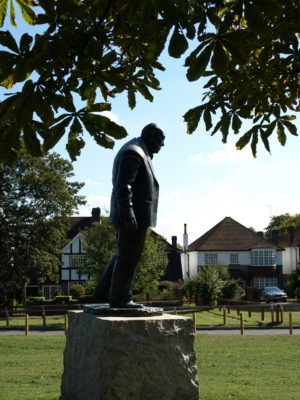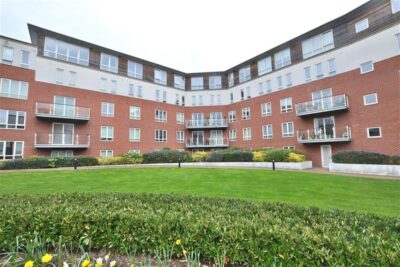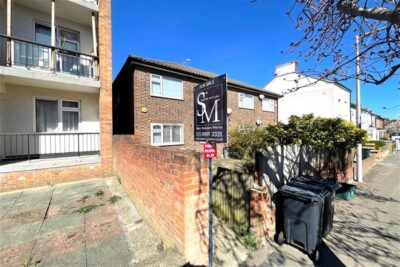Woodford and Wanstead Area Guide
The historic area of Woodford and Wanstead – a green suburb of London.
The area of Woodford and Wanstead is at the crossover from London into Essex and therefore has both the feel of cosmopolitan city life but graduates into a much greener area contained between the ancient woodland of Epping Forest and the floodplains of the River Roding.
The group of Anglo Saxon settlements and hamlets, that make up the various districts that are now collectively known as Woodford, each have their own character which directly relates to their original reason by which they came into existence ranging from being the ford, later bridge across the river, agricultural clearings in the forest through to a more commercial area on the main track, later road, from London out into the counties. The area has been strongly associated with political power, including being the long-term constituency for Britain’s greatest wartime Prime Minister, women’s suffrage, the country’s busiest Crown Court, banking and commerce as well as artists and writers and has long been a popular place to live with access to City and country life.
Woodford is recorded in the 1086 Domesday Book as Wdefort, although the previous recorded use is earlier in 1062 as Wudeford. This early name means ‘ford in or by the wood’ in Old English, and is often the case, is a literal description of the area. The ford is a crossing of the River Roding and it was replaced by a bridge around1238; this led to this south eastern part of the area being known as Woodford Bridge by the early nineteenth century. From here the road ran north and west along the forest edge and joined with the other hamlets including the area that became Woodford Wells and Woodford Green where there was access to water from wells. The Saxon Road eventually reached north of the Forest and branched both East and West at that point. Woodford by this chance was on the trade route to the further parts of Essex and East Anglia from London. The easy access to Epping Forest, where members of the royal family traditionally hunted, has made it attractive to Londoners since the Fifteenth Century, when wealthy Londoners started to build grand houses there. It became a mixed area of agriculture, small individual businesses along the High Road and the valley road with supporting small groups of cottage villages and larger mansion estates around Woodford Wells towards what is now South Woodford. Local historian and author of Woodford: A Pictorial History, Georgina Green, said: “Through the 1600 and 1700s local people continued village life just as their fathers and grandfathers had done. Sir James Wright’s slate factory was virtually the only example of local industry until the 17th century. Most people were farm labourers or worked in the grand houses that’s had been built earlier on.” The wealthier area around the High Road to the forest developed with tree lined avenues of large 3, 4 and 5 bedroom houses during the Georgian and Victorian ages and became known as Woodford Green during the last quarter of the nineteenth century.
The Eastern Counties Railway from Stratford to Loughton opened in 1856 and there were two stations at Snakes Lane (now Woodford) and George Lane (now South Woodford). This encouraged the building of many terraces of working family houses along the route of the railway and so the historic sense of wealthier people living “above” and the poorer “below” the line originated which has diminished but still exists to some degree today. The railway developed and became part of the Great Eastern Railway, then the London and North Eastern Railway and finally part of what became the London Underground when it extended the Central Line in 1947 with full electrification in 1948. As with most suburbs of London there was a large amount of house building between the wars which often meant the demolition of the old mansions and division of the estates creating garden suburb style developments such as the Monkhams’ and Knighton’s estates in 1920’s and 30’s and then more varied building after the second world war with council estates, infill developments and block of flats which give the whole area it’s characteristic eclectic mix of house styles formed over 100’s of years with the variety of shopping areas in each of the original village locations. Today we have supermarkets, convenience and local shops, beauticians, hairdressers, a myriad of coffee shops and cafes, gyms and leisure centres, the Odeon cinema and car showrooms however most serious shopping is done by travelling to Stratford, the West End of London, driving out to regional shopping Malls or online. Leisure is also pleasant with the Roding valley offering acres of open space for walks, fishing lakes, tennis courts, golf courses and athletics at the Ashton playing fields. The area boasts a few cricket clubs, including on the High Road at Woodford Green which is one of the oldest clubs in the country having been founded in 1735, rugby and football clubs. The imposing landmark building on the High Road as it joins the Epping New Road is the area’s premier public school of Bancrofts which stands on the site of an old workhouse.

As you travel from Woodford Green to South Woodford at Salway Hill there is an impressive statue of one of the areas most famous people with a sculpture of Sir Winston Churchill who was MP for the Woodford area from 1924 to 1964, including his times as Prime Minister, although the boundary of the constituency evolved during that time but always included Woodford. Other notable people associated with the area include the leading Suffragette, peace campaigner and anti-fascist Sylvia Pankhurst. Pankhurst was a long-time resident on Charteris Road, close to Woodford Station and previously she had challenged the moral codes of her day by living “in sin” with an Italian radical on 126 High Road, opposite the Horse and Well Pub. She renamed the cottage Red Cottage in homage to the political and there is still a memorial there.
Woodford has connections with major cultural figures. The first is the celebrated writer, artist and craftsman William Morris, founder of the Arts and Crafts Movement, a nineteenth-century revivalist movement dedicated to restoring England’s artisan traditions. As a child he lived at Woodford Hall between 1840 and 1847 at Woodford Hall. Another writer who lived in Woodford is James Hilton, who wrote the famous novel Goodbye Mr Chips.
As part of the suburban growth of London at the turn of the 20th century, Woodford significantly increased in population and had become a municipal borough with neighbouring Wanstead in 1937 before becoming part of Redbridge which itself is a London Borough within Greater London. Wanstead had also evolved in a similar fashion to Woodford having started as an agricultural village between the plains now known as Wanstead Flats and Woodford beside Epping Forest. The name Wanstead is probably from Saxon beginnings and first recorded in a charter of 1065 as Wenstede and the English Place-Names Society suggest that it derives from the Anglo-Saxon words Wen, signifying a hill or mound, and Stead, a place or settlement.
There was not much change in the area for a few hundred years with the village gaining public houses, a coaching Inn and Parish church and attracting similar interest from wealthy London tradesmen and courtiers as Woodford due to its proximity to both London and the forest where the Royal Family regulated hunted deer. The greatest example of this involves Wanstead House which was first a Tudor house that is believed to have been built in the 1560s by Lord Robert Rich. He had inherited the property from his father, Sir Richard Rich, who had been a major player in the royal courts of Henry VIII and Edward VI. In 1577 Rich sold the house to Robert Dudley, the Earl of Leicester, who was a great favourite of Elizabeth I, who visited him there.
It was replaced by a palatial building situated in the enormous park in Wanstead and it was a neo-classical mansion described by Morant as follows. The entrance was reached by a double flight of steps, and visitors would enter into the Great Hall, which was 51 feet long and 36 feet wide and high. The house was decorated with fine paintings, statues, chandeliers, tapestries, and gilded ceilings.
In 1812 it was owned by a nephew of the Duke of Wellington, who owing to his wife’s wealth and status changed his name to William Pole-Tylney-Long-Wellesley. William proved to be an unreliable and spendthrift husband, whose extravagant lifestyle drained the entirety of Catherine’s great fortune and the couple were forced to auction off the contents of Wanstead House in a sale lasting 32 days. William then sold the house for building materials and it was taken down stone by stone until nothing remained apart the Temple which was originally a poultry house complete with classic portico. The Temple was promoted to an exotic aviary in the 1760s and now serves as a visitor centre housing the history of the house.
Historic public houses include the Eagle hotel, Woodford Road, which is Wanstead’s oldest inn. As the Spread Eagle it is said to have existed in the 17th century although the present building dates from the 18th century. The George (formerly George and Dragon), High Street, is recorded from 1716, but was rebuilt c. 1902. and it bears a tablet, dated 1752, with a cryptic inscription commemorating a cherry pie
The original parish church of St. Mary was a few yards from the present building, which replaced it in 1790, and was near to Wanstead House.
The Merchant Seamen’s orphan asylum in Hermon Hill, now Wanstead Hospital, was erected in 1861. The Merchant Seamen’s orphan asylum, established in 1827 at St. George’s Cable Street it grew into a building in Bow Road and then was transferred in 1862 to a purpose built building in Hermon Hill, Wanstead, which provided places for 300 orphans of British merchant seamen. The building was taken over in 1921 by the convent of the Good Shepherd, as a refuge for women and girls and later became Wanstead hospital. It stands in a commanding position on high ground and was designed by G. C. Clarke as a fine example of the ‘Venetian Gothic’ style.
Another landmark building is now the busiest Crown Court in England and situated by Eagle Pond at Snaresbrook. It was built between 1841 in 1843 as an orphanage at the behest of the philanthropist Andrew Reed who named it the Infant Orphanage Asylum and later it became the Royal National Children’s Foundation and it remained an orphanage until 1938 when it became the Royal Wanstead School. With the school winding down by the mid 1960’s, work began on converting certain sections of the building into a court. It opened, as such, on 1 April 1965 when the first case was heard. The building had one judge and a group of 12 staff who managed 325 cases within the first year. The court manages around 7,000 cases a year, making it the busiest Crown Court in the United Kingdom.
Among notable residents of Wanstead was James Bradley (1693–1762), astronomer royal, who was trained at Wanstead by his uncle James Pound (rector 1707–24), himself a distinguished astronomer and friend of Sir Isaac Newton. In 1717 Pound and Bradley set up in Wanstead Park one of the largest telescopes in Europe at the time. William Penn (1644–1718), Quaker leader and founder of Pennsylvania, was brought up at Wanstead.
Wanstead is now a vibrant, cosmopolitan area that is often considered as still a village within Greater London and has a High Street which, unusually in this day and age, is still packed with independent boutiques, butchers, greengrocers, hardware and home shop and gift shops as well as restaurants, cafes and the Cuckfield public house.
Recent Property to rent in South Woodford
Spencer Munson Property Services have been a specialist residential Lettings agent in the Woodford area since Spencer founded the company in 2006. See our recent South Woodford properties below or contact us for further information.
Regency Court, E18
£425,0002 Bedroom Flat / Apartment
** **LUXURY 2 BEDROOM APARTMENT ** ** Close to South Woodford Tube Station ** ** Third Floor ** ** 24 hour concierge** ** Underground parking** ** Near shops, bars and restaurants** ** Communal Garden ** ** EPC Rating: C / Council Tax band D ** ** 104 years lease unexpired ** ** £1683 service charge per 6 months ** ** ground rent £250.00 per annum ** **Albert Road, South Woodford E18
£375,0002 Bedroom Flat / Apartment
** Two Bedroom maisonette ** **First Floor** ** Close to South Woodford Tube station / central line ** ** Permit parking ** ** good sized rooms ** ** Share of Freehold ** ** 980 years unexpired lease ** ** EPC Rating D** ** Council tax band C


